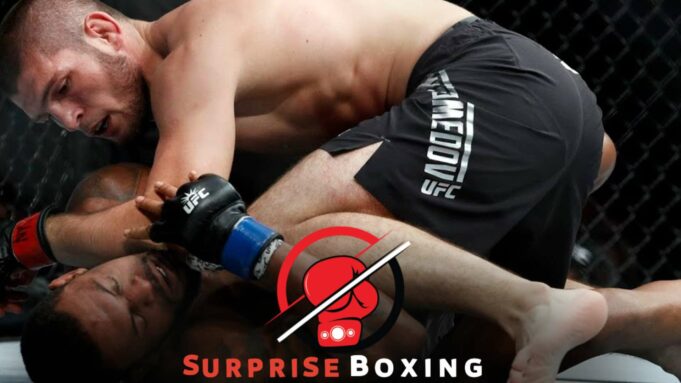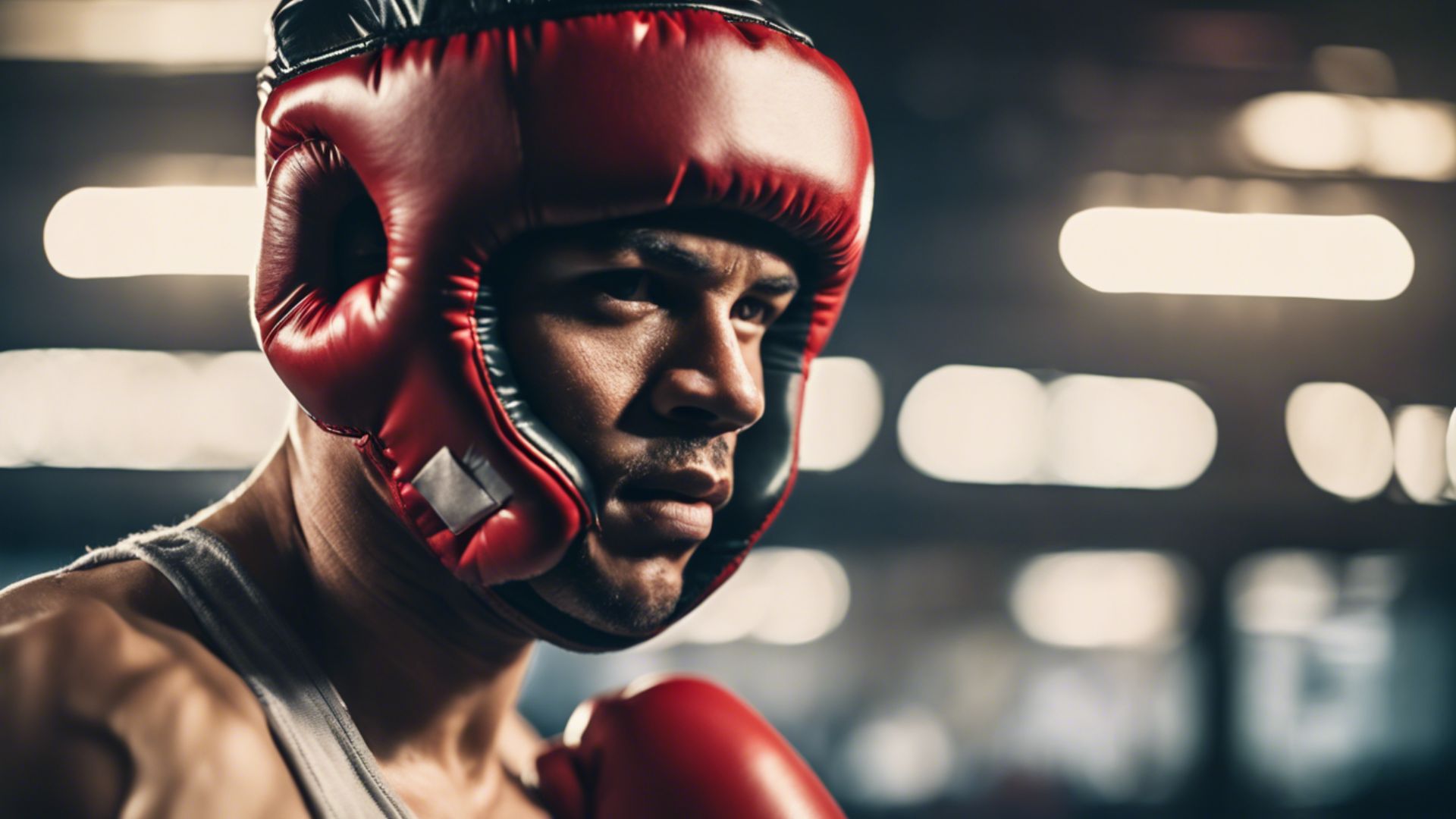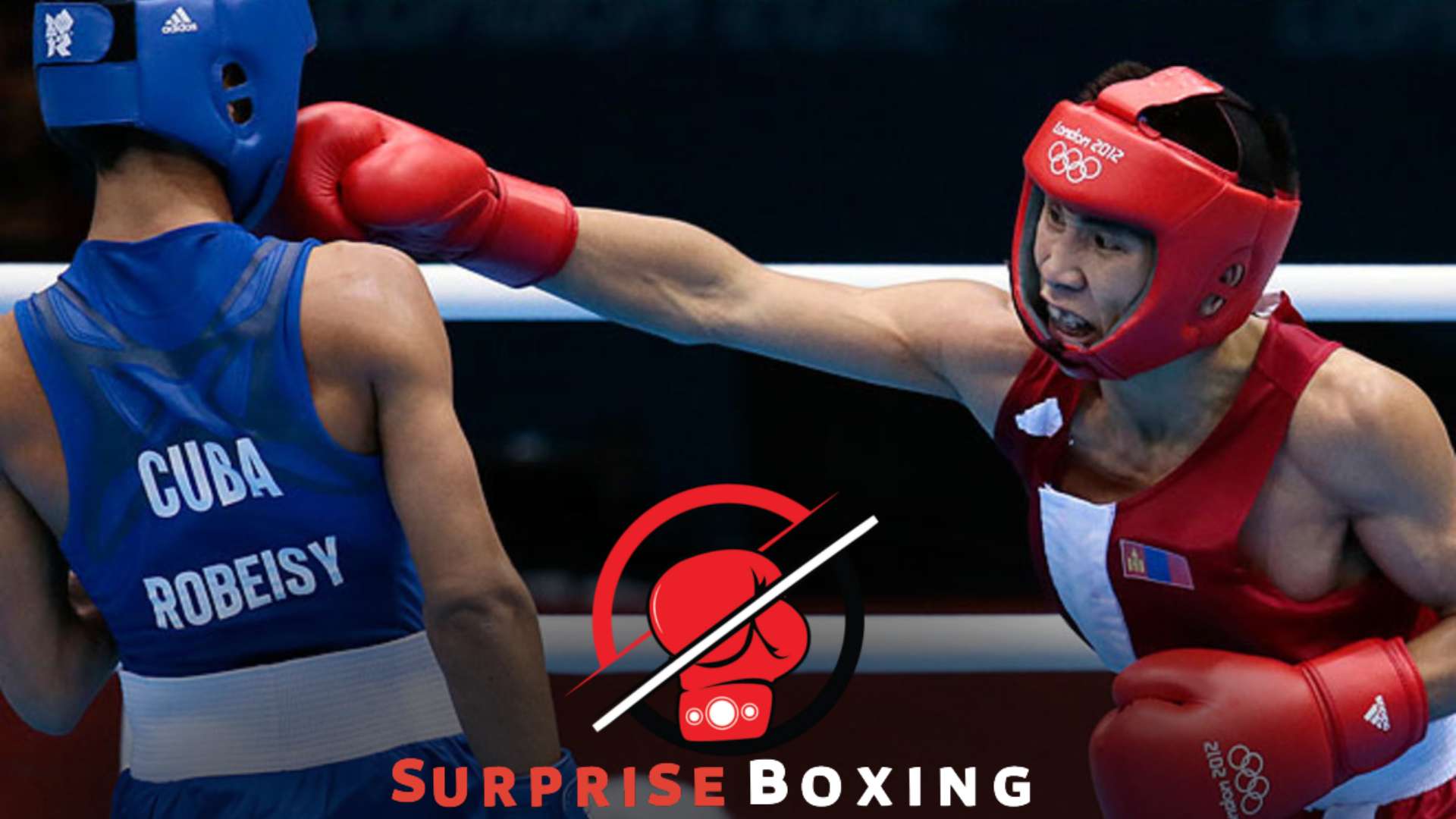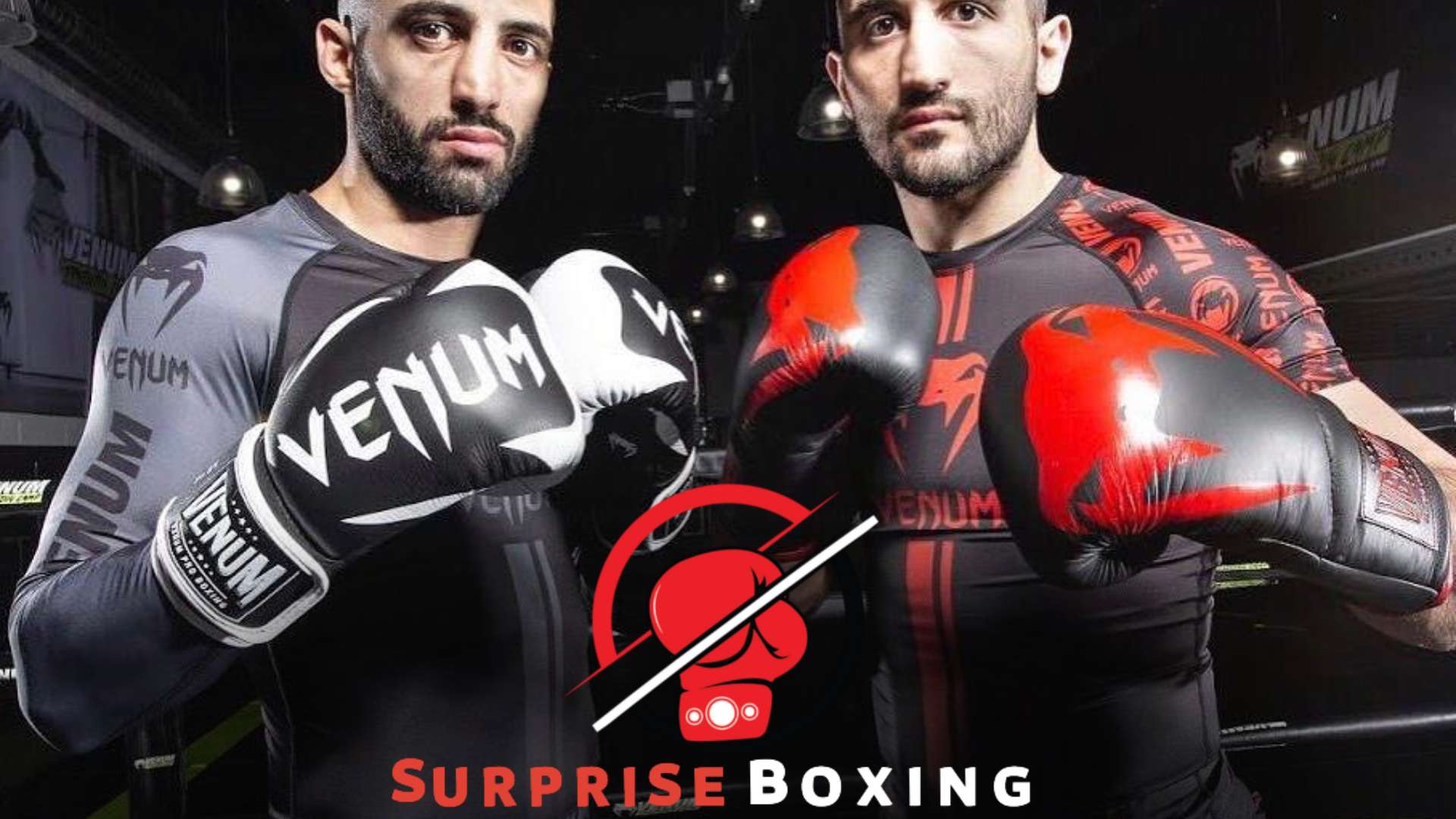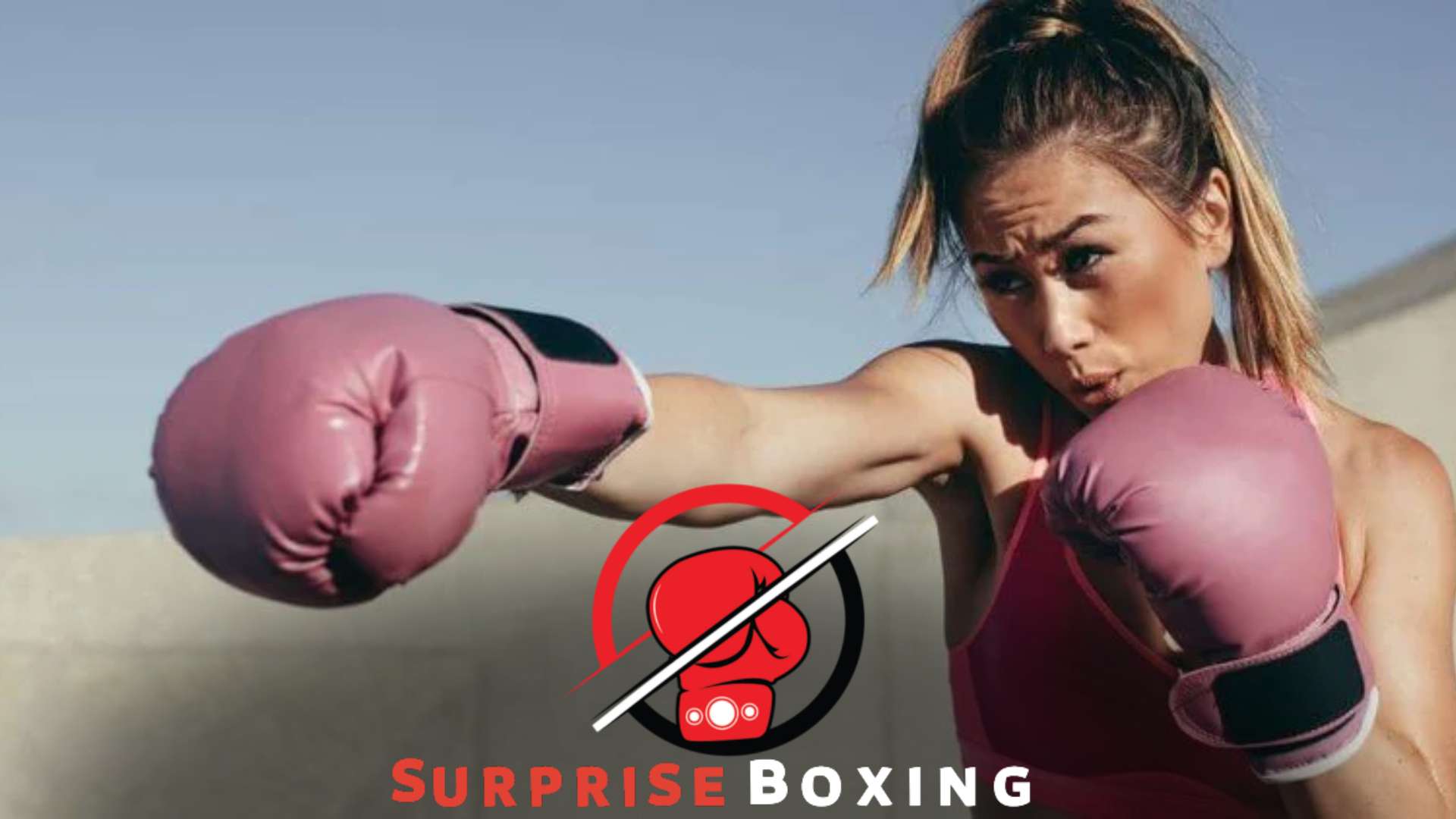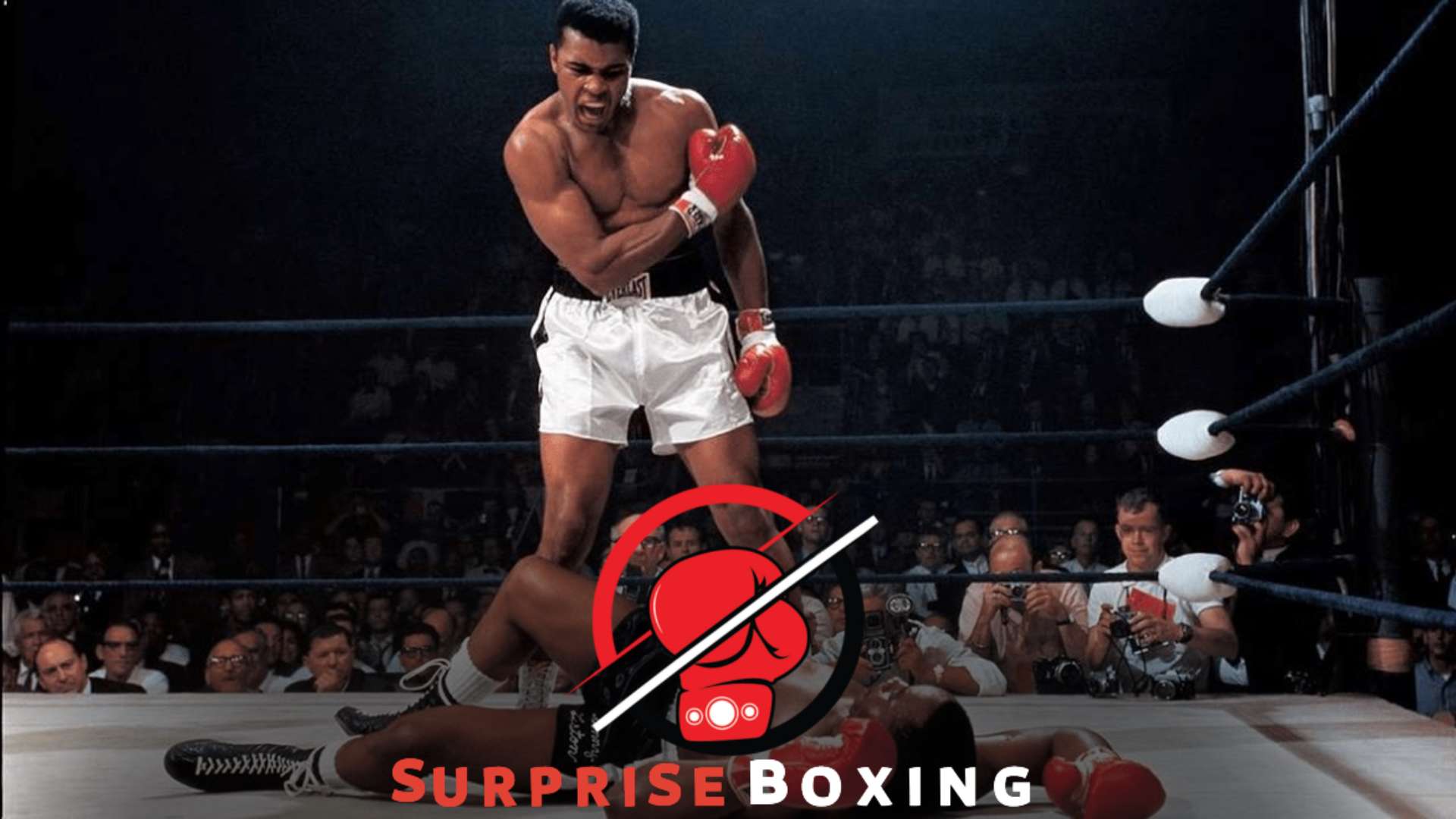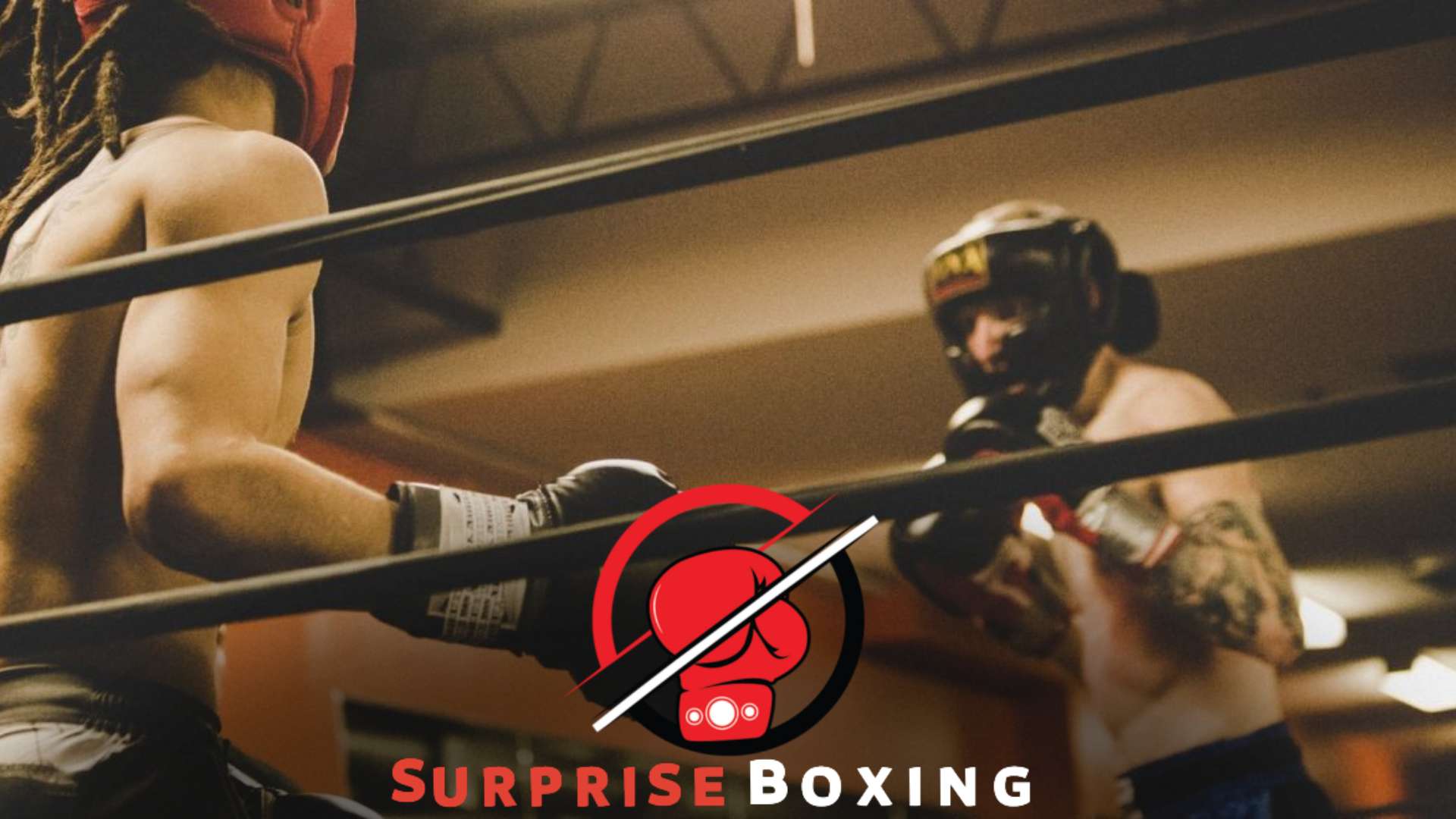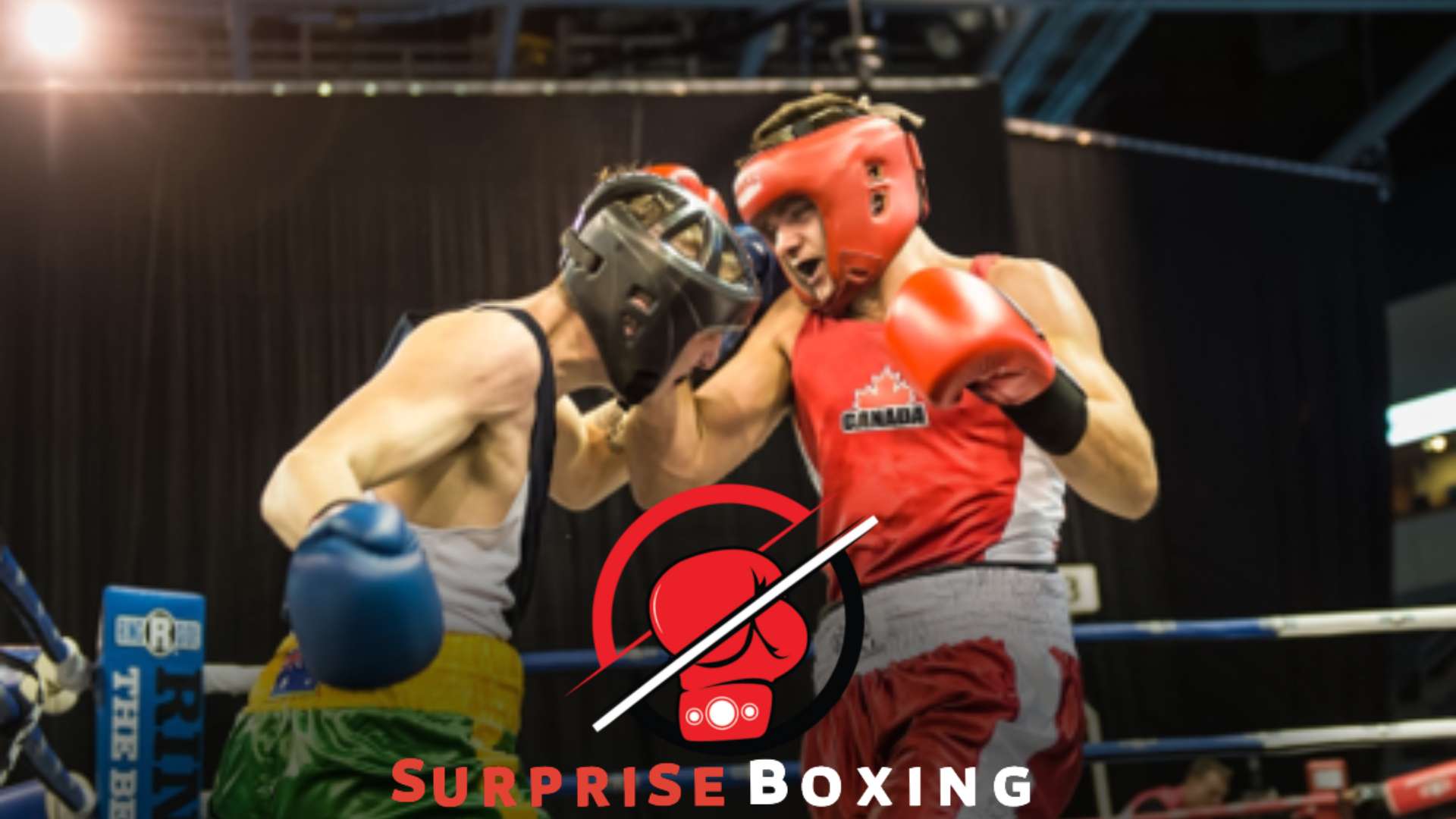No, wrestling headgear should not be used for boxing as they provide different types of protection. Boxing requires specific headgear designed to absorb and distribute impact force, while wrestling headgear focuses primarily on protecting the ears from injury.
Using wrestling headgear in boxing may not provide adequate protection against punches to the face and head, increasing the risk of serious injury. While wrestling and boxing are combat sports, they utilize different techniques and have distinct safety requirements.
In boxing, the headgear is designed to absorb impact and protect the face and head from punches. On the other hand, wrestling headgear primarily focuses on protecting the ears and preventing ear injuries, such as cauliflower ear. Using wrestling headgear in boxing may not provide the necessary protection to prevent concussions or facial injuries. Therefore, using the appropriate headgear explicitly designed for boxing is crucial to minimize the risk of severe injuries during training or competition.
Understanding Wrestling Headgear: Design, Components, Purpose, and Safety Standards

Wrestling headgear is specifically designed for wrestling and may not be suitable for boxing due to different safety standards and sport-specific requirements. Using equipment designed for each sport is crucial to ensure maximum safety and protection.
Wrestling headgear is primarily designed for protection during wrestling matches or practices. However, some may wonder if wrestling headgear can also be used for boxing. In this section, we will delve into the design, components, purpose, and safety standards of wrestling headgear to provide a more comprehensive understanding:
Design
- Wrestling headgear typically consists of padded ear cups, adjustable straps, and a top strap that goes across the forehead.
- The ear cups are made from high-density foam or other impact-absorbing materials to cushion and protect the ears.
- The adjustable straps allow for a secure and customizable fit for different head sizes.
- Most wrestling headgear is designed to be lightweight and non-obstructive to ensure freedom of movement during matches.
Components
- Ear cups: The main component of wrestling headgear, ear cups provide protection to the ears and help prevent ear injuries such as cauliflower ear.
- Adjustable straps: These straps ensure a snug fit and prevent the headgear from slipping or loosening during intense wrestling movements.
- Top strap: The head strap helps keep the headgear secure and prevents it from shifting, providing stability during matches.
Purpose
- The primary purpose of wrestling headgear is to protect the ears from potential injuries, particularly those associated with excessive pressure or friction.
- It is designed to minimize the risk of developing cauliflower ear, which occurs when the ear is repeatedly subjected to trauma or compression.
- Wrestling headgear can also protect against accidental bumps, scrapes, or cuts to the head and face during matches or practice sessions.
Safety Standards
- Wrestling headgear is manufactured according to various safety standards to ensure its effectiveness in protecting the ears and head.
- These safety standards focus on factors such as the material’s durability, the level of impact absorption, and the secure fit provided by the headgear.
- Before purchasing wrestling headgear, checking if it adheres to the necessary safety standards is essential to ensure optimal protection during wrestling activities.
While wrestling headgear is specifically designed for wrestling, its primary purpose is to protect the ears from injuries such as the cauliflower ear. While it may provide minimal protection for the head and face, its design and components are not optimized for boxing.
It is recommended to use headgear designed explicitly for boxing to ensure maximum protection during boxing matches or training sessions.
Boxing Headgear: Understanding its Functions, Key Features, and Importance in Head Trauma Protection
Boxing headgear is specifically designed to protect against head trauma in the sport. While wrestling headgear may offer some protection, it is not recommended for boxing due to differences in design and function. Understanding the importance of boxing headgear is crucial for ensuring the safety of athletes in the ring.
Boxing headgear is a crucial piece of equipment that significantly protects a boxer’s head from injuries and reduces the risk of head trauma. Whether you’re a professional boxer or someone who practices boxing as a hobby, understanding the functions, key features, and importance of boxing headgear is essential for your safety and overall well-being.
Functions of Boxing Headgear
- Shock absorption: Boxing headgear is designed to absorb and distribute the impact of punches, minimizing the force that reaches the boxer’s head. It helps cushion the blow and reduces the risk of concussions or other head injuries.
- Protection from cuts and bruises: The padding in boxing headgear acts as a barrier, protecting your face, temples, and cheeks from cuts, bruises, and facial fractures. It provides an extra layer of defense against accidental clashes or stray punches.
- Cheek and jaw protection: Properly fitted boxing headgear covers the cheeks and jaw, protecting these vulnerable areas. It helps guard against direct impacts that could cause fractures or dental injuries.
Key Features of Boxing Headgear
- Padding: Good boxing headgear is equipped with sufficient padding that is both shock-absorbent and durable. The padding material, often multi-layered foam, should provide adequate protection without compromising visibility or comfort.
- Secure fit: A snug fit is essential for optimal head protection. Boxing headgear should have adjustable straps or laces to ensure a customized fit for everyone, reducing the risk of slipping or moving during intense sparring sessions or bouts.
- Ventilation: Adequate airflow is crucial to prevent excessive heat and moisture buildup during training or matches. Look for boxing headgear with ventilation holes or mesh panels to promote breathability and comfort.
Importance of Boxing Headgear in Head Trauma Protection
- Injury prevention: Head trauma can have severe consequences, both in the short and long term. Boxing headgear significantly reduces the impact force on the head, protecting against concussions, skull fractures, and other traumatic brain injuries. It is a proactive measure to minimize the risk of such injuries during training or competitive bouts.
- Confidence and mental focus: Knowing you wear reliable headgear can boost your enthusiasm inside the ring. It allows boxers to focus on their technique and strategy without worrying excessively about potential head injuries, enabling better performance and overall safety.
- Longevity in the sport: By prioritizing head trauma protection, boxing headgear can help extend a boxer’s career. With proper protective gear, boxers can reduce the cumulative damage to their heads over time, allowing them to continue participating in the sport they love.
Investing in high-quality boxing headgear is paramount for protecting your head from injuries, minimizing the risk of head trauma, and ensuring longevity in the sport. Understanding the functions, key features, and importance of this essential equipment is vital for every boxer, providing enhanced performance and prioritizing your well-being inside and outside the ring.
Benefits of Using Wrestling Headgear in Boxing: Enhanced Protection, Cost-Effectiveness, and Extended Comfort During Training Sessions
Wrestling headgear offers enhanced protection, cost-effectiveness, and extended comfort during boxing training sessions. Its benefits make it a viable option for boxers looking for added safety without breaking the bank.
Wrestling headgear is commonly used in, well, wrestling. But can it be used as protective gear for boxing as well? Let’s explore the benefits of using wrestling headgear in boxing, including enhanced protection, cost-effectiveness, and extended comfort during training sessions.
Enhanced Protection
- Cushioned padding: Wrestling headgear is designed with thick padding to protect the ears, which is particularly vulnerable in any combat sport. This additional padding can help absorb the impact of punches and reduce the risk of ear injuries.
- Improved head protection: While boxing gloves primarily safeguard the hands, wearing wrestling headgear adds an extra layer of protection to the head. It can help absorb and disperse the force from punches, reducing the risk of concussions or other head injuries.
Cost-Effectiveness
- Dual-purpose gear: Investing in wrestling headgear that meets the necessary safety requirements can be a cost-effective solution for boxing enthusiasts. Rather than purchasing separate headgear for boxing, using wrestling headgear allows you to utilize a single piece of equipment for multiple combat sports.
- Affordable option: Wrestling headgear is generally priced more competitively compared to specialized boxing headgear. This affordability factor can be particularly advantageous for beginners or those on a budget.
Extended Comfort During Training Sessions
- Secure and adjustable fit: Wrestling headgear is designed to fit snugly, providing stability and comfort during training sessions. Many headgear models feature adjustable straps, allowing users to customize the fit according to their preferences. This ensures a secure fit and minimizes distractions during boxing training.
- Ventilation and breathability: The breathability of wrestling headgear can be a significant advantage throughout intense workout sessions. The design typically incorporates ventilation holes that promote air circulation, preventing excessive heat and sweat buildup.
Using wrestling headgear for boxing can offer enhanced protection for crucial areas, a cost-effective option for gear, and extended comfort during training sessions. Consider the benefits outlined here to make an informed decision when choosing the appropriate headgear for your boxing endeavors.
Stay safe and train smart!
Limitations of Using Wrestling Headgear in Boxing: Impaired Facial Protection, Restricted Visibility, Breathing Impact, and Compliance With Boxing Regulations
Wrestling headgear cannot be used for boxing due to several limitations. It fails to provide adequate facial protection, restricts visibility, impairs breathing, and does not comply with boxing regulations.
Can Wrestling Headgear Be Used for Boxing
Wrestling headgear is specifically designed to protect the ears and head during wrestling matches, but can it be used effectively in boxing? Let’s look at the limitations of using wrestling headgear in boxing and its potential impact on facial protection, visibility, breathing, and compliance with boxing regulations.
Limitations of Using Wrestling Headgear in Boxing
Impaired facial protection:
- Wrestling headgear primarily focuses on protecting the ears and head, leaving the face vulnerable to potential strikes and punches. Unlike boxing headgear, which offers comprehensive coverage, wrestling headgear may not adequately safeguard the beginning during boxing matches.
Restricted visibility:
- Wrestling headgear allows the wrestler to have an unobstructed view of their opponent. However, this design doesn’t consider the unique stance and movements in boxing. The structure and placement of wrestling headgear may limit a boxer’s peripheral vision, making it challenging to anticipate incoming punches and react accordingly.
Breathing impact:
- Boxing requires athletes to have proper airflow for optimal performance. While wrestling headgear may not impede breathing entirely, it may restrict air circulation. This can lead to discomfort and potential breathing difficulties during intense boxing matches, affecting overall performance.
Compliance with boxing regulations:
- Boxing has specific regulations in place to ensure the safety of its participants. The use of appropriate boxing headgear is typically compulsory in both amateur and professional matches. While wrestling headgear may offer some protection, it might not meet the required standards of boxing authorities. Boxers risk disqualification or being barred from competitions if they fail to comply with safety guidelines.
To conclude, while wrestling headgear may provide some level of protection, it is unsuitable for use in boxing due to its limitations regarding facial security, restricted visibility, potential breathing impact, and non-compliance with boxing regulations. Boxers should prioritize investing in boxing-specific headgear to ensure optimal safety and performance in the ring.
Expert Opinions and Studies: Perspectives From Boxing Trainers, Professional Boxers, and Scientific Research
Perspectives from boxing trainers, professional boxers, and scientific research show that wrestling headgear is not recommended for boxing. Experts advise using specialized boxing headgear to ensure maximum protection and reduce the risk of head injuries in the sport.
Can Wrestling Headgear Be Used for Boxing?
Wrestling headgear and boxing may seem like entirely different sports, but some wonder if wrestling headgear can also be used for boxing. In this section, we’ll explore expert opinions and studies on this topic, hearing from boxing trainers, professional boxers, and scientific research.
Considering the insights and findings of those with experience in boxing and the scientific community is essential.
Here are some expert opinions and studies that shed light on the topic:
Boxing trainers:
- Boxing trainers generally do not recommend using wrestling headgear for boxing. Their reasoning is based on the differences in the sports’ techniques and safety requirements. Boxing trainers emphasize the need for proper protective gear designed specifically for boxing, such as headgear that offers necessary padding and protection for the specific punches thrown in boxing.
Professional boxers:
- Based on their experience in the ring, professional boxers also advise against using wrestling headgear for boxing. They emphasize the importance of using gear designed explicitly for boxing to ensure safety and optimal performance. The head movement and style of punches in boxing differ from that of wrestling, and using the appropriate headgear helps protect against injuries that are more common in boxing.
Scientific research:
- Scientific studies examining the effectiveness and suitability of wrestling headgear for boxing are limited. However, the available scientific research supports the notion that using headgear specifically designed for the sport is crucial. The biomechanics and impact forces involved in boxing punches differ significantly from those in wrestling. Thus, it is recommended to use boxing headgear to ensure adequate protection for the specific movements and forces experienced in boxing.
Both boxing trainers and professional boxers concur that using wrestling headgear for boxing is not advisable. Scientific research also supports the need for sport-specific headgear to ensure fighters’ maximum safety and performance. It is crucial to prioritize protection and choose gear explicitly designed for the sport to mitigate the risks associated with boxing.
Safety and Regulatory Considerations: Ensuring Protective Gear Compliance and Athlete Well-Being in Boxing and Wrestling
Ensure boxer safety and compliance using protective gear that meets regulatory standards. While wrestling headgear may provide some protection, it is essential to use specifically designed boxing headgear for optimal athlete well-being.
Wrestling headgear is designed specifically for wrestling, protecting the ears and head during matches. However, some may wonder if wrestling headgear is suitable for other combat sports, such as boxing. We examine the safety and regulatory considerations surrounding the use of wrestling headgear in boxing, ensuring compliance with protective gear standards and the overall well-being of athletes.
Safety Standards and Regulations in Boxing and Wrestling
- Boxing and wrestling are physically demanding sports requiring participants to wear appropriate protective gear. These safety standards and regulations are put in place to minimize the risk of injury and ensure the well-being of athletes.
- Headgear is typical in boxing, as it provides a certain level of protection for the head and face. Boxing headgear is specifically designed to absorb impact and reduce the risk of serious injuries, such as concussions.
- Wrestling headgear, on the other hand, is primarily designed to protect the ears from injury during wrestling matches. It does not offer the same level of protection for the head and face as boxing headgear.
- It is important to note that using wrestling headgear in boxing may not comply with the specific safety standards and regulations of boxing governing bodies. This could lead to disqualification or an increased risk of injury for the athlete.
Protective Gear Compliance in Boxing
- Regulatory bodies often mandate specific protective gear in boxing to ensure athlete safety. This includes gloves, mouthguards, and headgear.
- Boxing headgear is designed to meet the safety standards of boxing governing bodies. It undergoes rigorous testing to ensure its ability to absorb impact and protect the head and face during bouts.
- Wrestling headgear, although effective in its intended use for wrestling, may not meet these specific safety standards for boxing. This could pose a risk to the athlete, as it may not provide the necessary protection during boxing matches.
- Athletes participating in boxing should prioritize using proper boxing headgear that complies with the safety standards and regulations outlined by the sport’s governing bodies. This will help ensure their safety and reduce the risk of serious injuries.
Athlete Well-Being in Boxing and Wrestling
- The well-being of athletes is of utmost importance in both boxing and wrestling. This includes using appropriate protective gear to minimize the risk of injury and promote a safe sporting environment.
- While wrestling headgear can protect the ears during matches, it may not offer the same level of protection for the head and face as boxing headgear.
- Athletes participating in combat sports like boxing should prioritize their safety and well-being by using the appropriate protective gear specific to their sport. This includes wearing boxing headgear that meets the safety standards and regulations of boxing governing bodies.
- By adhering to these safety standards and regulations, athletes can minimize the risk of severe injuries and ensure their overall well-being in boxing and wrestling.
While wrestling headgear is suitable for the sport it was designed for, it may not be ideal for boxing due to the different safety standards and regulatory requirements. To prioritize athlete safety and well-being, it is recommended that boxers use specific boxing headgear that complies with the safety standards set by boxing governing bodies.
This will help reduce the risk of injuries and create a safer sporting environment for all participants.
Can Wrestling Headgear Be Used for Boxing?
Wrestling headgear is designed specifically for wrestling, but can it be repurposed for use in boxing? Let’s explore the factors to consider and come to a conclusion.
Comfort and Fit
- Wrestling headgear is not designed to provide the same comfort and fit as boxing.
- The padding and straps of wrestling headgear may not offer optimal protection and stability for boxing.
Protection
- Boxing headgear is specifically designed to protect the head from punches and reduce the risk of injury.
- Wrestling headgear may not provide the same level of protection as boxing headgear, as it is not designed to withstand the impact of punches.
Visibility
- Boxing headgear is designed to allow for maximum visibility during a match.
- The design of wrestling headgear may limit visibility, which can be a potential hazard in boxing.
Approved By Boxing Organizations
- Boxing organizations have strict guidelines regarding the type and specifications of headgear allowed in matches.
- Wrestling headgear may not meet these guidelines, making it ineligible for use in boxing matches.
While wrestling headgear may seem like a cost-effective alternative to boxing headgear, it is not recommended for use in boxing. Boxing headgear is designed to provide the necessary protection, fit, and visibility required for the sport. Using wrestling headgear in boxing may compromise safety and increase the risk of injury.
Therefore, it is advisable to invest in proper boxing headgear for the best overall performance and safety in the ring.

Frequently Asked Questions for Can Wrestling Headgear Be Used for Boxing
Can Wrestling Headgear Be Used for Boxing?
Wrestling headgear is designed to protect the ears and head from impact during wrestling matches. It does not provide the same level of protection for the face, nose, and chin that boxing headgear does. If you are participating in boxing, it is recommended to use proper boxing headgear for the best protection.
Conclusion
Wrestling headgear may seem like a viable option for boxing, as it protects the ears and head. However, it is not recommended to use wrestling headgear for this purpose. Boxing involves different movements, techniques, and impact force compared to wrestling.
The headgear used in boxing is designed to absorb and distribute impact, reducing the risk of injuries. It covers the entire head, including the face and chin, ensuring proper protection during punches. While wrestling headgear may provide limited protection for the ears, it lacks the padding and coverage required for boxing.
Therefore, it is crucial to invest in proper boxing headgear to ensure the safety and well-being of the boxer. Don’t compromise on protection – choose the right equipment for your chosen sport.

